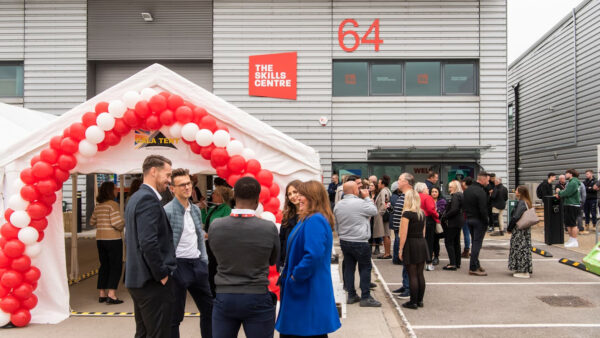
Steve Goodwin, a director at GVE Commercial Solutions, compares NEC3’s treatment of weather-related events with the simpler JCT approach.

Steve Goodwin
Has one of your sites been disrupted by the recent flooding, or severe weather? Do you hope to make a claim under your contract? If so then beware, as the clock might be ticking and evidencing your claim might be harder than you think.
In NEC3 contracts, it might be possible to make a successful compensation event claim due to the recent flooding and severe weather. But in our experience many contractors and subcontractors are simply not aware of the complex issues involved.
The key issues are first the contract notice period and the serious consequences of expiry, and second, the potential difficulties in evidencing your entitlement.
The first issue is easy. Under NEC3 you must make a claim within eight weeks of the event happening, or a lesser period of seven weeks for subcontractors, or else potentially lose your entitlement.
The second issue is the complex one. Put simply, NEC3 weather claims are based on comparing the relevant weather measurements against actual historic weather data. It is, some would say, scientifically measured.
Also, entitlement has the potential to provide “time and money” for contractors. In contrast, the JCT contract relies upon contractors proving “exceptionally adverse” weather. This is a notoriously difficult and subjective phrase, and in any event, severe weather is a neutral event providing “time but no money”.
NEC3 clause 60.1 (13) provides that “only the difference between weather measurement and the weather which the weather data shows to occur on average less frequently than once in ten years is taken into account in assessing a compensation event”.
“The NEC3 contract must surely have intended to compensate the contractor for the effects of severe weather it encounters, but this might not always be the case. The NEC cannot possibly be envisaging all of this complexity and doubt in its drafting.”
This is a hugely unappreciated statement, and practically it presents all sorts of issues. The December floods have been reported as 1-in-100-year events so it would seem inevitable that some construction sites will have experienced weather that meet the NEC3 threshold criteria for 1-in-10-year average conditions – as long as contractors get the relevant weather data.
But given that a 1-in-9-year event is a contractor’s risk, and would not qualify for compensation, how do you quantify the degree to which the 1-in-10-year event is worse than the 1-in-9-year event? What is “the difference”?
The standard NEC3 weather measurements are cumulative rainfall (mm), the number of days of rain over 5mm, the number of days with minimum air temperature below zero and the number of days with snow lying on the ground. The Met Office offers the industry this data on a subscription service, usually providing 30 to 40 years’ of data on a given location, and it will also calculate the metrics for a 1-in-10-year event
That sounds easy to assess, but take one example. If the 1-in-10-year average measurement for cumulative rainfall is 120mm and the weather measurement was 130mm, how would you price the compensation event?
On some sites, 130mm might flood the site whereas 120mm would not. This might be an obvious ‘extra’ and relatively easy to price. But on others, 105mm might flood the site and – in the above example – this would be considered the contractor’s risk. So on this site, what difference does the 130mm make? What’s a bit more rain once it’s already flooded? Not such an easy question to answer.
As mentioned, Met Office records are widely used. However, the nearest Met Office weather station, where accurate records are collected, can often be 10 miles or more from a site. What happens when the weather at the weather station is different from the weather at your site?
Read related articles
Q&A: CIC’s Sue Illman on tackling flooding
You might find you have entitlement when there was no issue on site and conversely you might find you have no entitlement when the site was severely disrupted by the weather. The further away the weather station, the more likely this is to happen.
A common misconception often cited is that the statistic to be used is the “10-year average”. The NEC3 uses the 1-in-10-year average as its threshold measure. Met Office statistics show that the two numbers are often very different. The 1-in-10-year average is a much higher threshold than the 10-year average.
What about JCT?
There is a further misconception that the NEC3 provides contractors with a better weather risk profile than, say, a JCT contract. I am yet to be convinced this is true.
JCT, whilst not providing the same certainty for weather events, does at least avoid some of the NEC3 pitfalls raised above. Simply, in a JCT contract, if the weather on site is “exceptionally adverse” and causes the contractor delay, and provided the relevant notices are issued on time, entitlement to “time” should exist (but no money).
But back to NEC3. The contract must surely have intended to compensate the contractor for the effects of severe weather it encounters, but as you can see this might not always be the case. The NEC cannot possibly be envisaging all of this complexity and doubt in its drafting.
Even the parties that enter into an NEC3 project, perhaps not quite understanding the importance of weather stations local to the site, still presumably set off with a basic agreement and understanding that severe weather is somehow compensatable to the contractor in some form. But clearly the NEC “rules” might not quite adhere to the same basic notion in certain circumstances.
The message is therefore clear. If you have delay or disruption due to flooding or severe weather and want to make a successful claim, proceed with caution and do not delay issuing that notice.
Insurance issues
Alternatively, contractors can also insure themselves against the worst of the weather. Following severe weather it is common for contractors to call upon their insurance policies to recover the costs incurred due to severe weather events.
It may be that a contractor can claim concurrently, both from the insurer and under the contract, but there will be, at some point, a conflict between the two claims which will inevitably be concluded by some abatement one way or the other.
Steve Goodwin can be contacted at [email protected]









An interesting article highlighting the confusion often involved in weather downtime and compensation claims. The Met Office does however offer a much denser coverage of weather reporting locations for contractors than may be implied here. Over 3560 points are available for contractors to choose from. It is for users to ensure they locate and choose the nearest weather station to their sites to avoid some of the pitfalls mentioned in the article and of course the Met Office are more than happy to offer guidance and advice on the matter. Please see here for details http://www.metoffice.gov.uk/construction/location-based-reports. Met Office staff are also on hand to advise you on 1-in-10 figures and long term averages; just contact us at [email protected] or look at the FAQ on our building webpage.